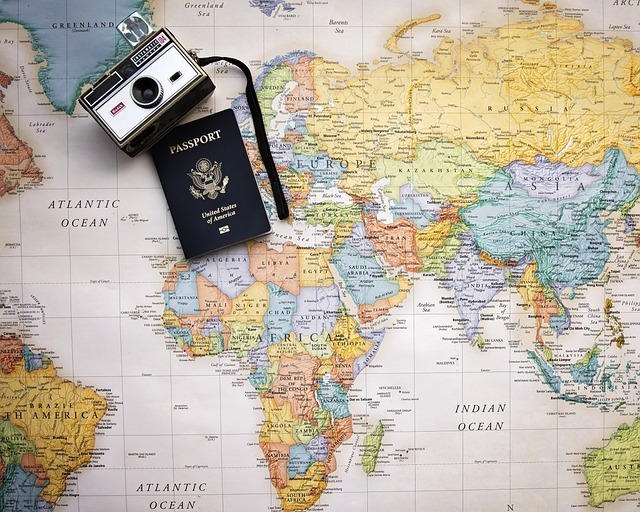Introduction
In the realm of travel and exploration, tourist cartography plays a crucial role in guiding adventurers from pixels on a screen to real-world pathways. The art and science of creating tourist maps combine geographical accuracy with aesthetic appeal to offer travelers a seamless navigation experience. Whether you’re exploring a bustling city, venturing into the wilderness, or simply planning a local outing, understanding the nuances of tourist cartography can enhance your journey and ensure you make the most of your time. This article delves into the fascinating world of tourist cartography, offering insights into its creation, significance, and how it can elevate your travel experiences.
1. The Fundamentals of Tourist Cartography
Tourist cartography involves more than just plotting locations on a map. It requires a blend of artistic design and technical precision to produce maps that are both functional and visually appealing.
Key Elements of Tourist Cartography:
- Accuracy: Accurate representation of geographical features, landmarks, and amenities is crucial. Cartographers use various tools and techniques to ensure the map reflects real-world locations correctly.
- Design Aesthetics: Aesthetic considerations are essential for making maps engaging and easy to use. This includes choosing colors, fonts, and symbols that are visually pleasing and enhance readability.
- Functionality: Tourist maps must serve practical purposes. They should include clear markers for points of interest, transportation routes, and other essential information to guide travelers effectively.
2. The Process of Creating Tourist Maps
Creating a tourist map involves several stages, from data collection to design and final production. Understanding this process can provide insight into how maps are crafted and the care involved in their creation.
Steps in Map Creation:
- Data Collection: Cartographers gather data from various sources, including satellite imagery, surveys, and local information. This data forms the foundation of the map’s content.
- Drafting and Design: Using specialized software, cartographers create drafts of the map, incorporating data and design elements. This stage involves refining the layout and ensuring the map meets functional requirements.
- Review and Editing: Draft maps undergo thorough review and editing to correct errors and enhance clarity. Feedback from test users and stakeholders is often used to make improvements.
- Final Production: Once finalized, the map is produced in various formats, such as printed copies or digital versions. The final product is designed to be user-friendly and visually appealing.
3. The Role of Technology in Modern Cartography
Advancements in technology have revolutionized the field of tourist cartography, making it more dynamic and interactive. Modern tools and technologies have expanded the possibilities for map creation and use.
Technological Innovations:
- GIS (Geographic Information Systems): GIS technology allows cartographers to analyze and visualize spatial data, creating more detailed and accurate maps.
- Digital Mapping Tools: Software like Adobe Illustrator and mapping platforms such as Google Maps enable the creation of intricate and interactive maps with ease.
- Augmented Reality (AR): AR technology overlays digital information onto physical spaces, enhancing map usability by providing real-time navigation and interactive features.
4. The Impact of Tourist Maps on Travel Experience
Well-designed tourist maps significantly impact travelers’ experiences by guiding them to key attractions and helping them navigate unfamiliar areas.
Benefits of Effective Tourist Maps:
- Enhanced Navigation: Clear and accurate maps help travelers find their way efficiently, reducing the risk of getting lost and ensuring a smoother journey.
- Discovering Hidden Gems: Tourist maps often highlight lesser-known attractions and local favorites, allowing travelers to explore beyond popular tourist spots.
- Convenience and Accessibility: Maps provide essential information on amenities such as restaurants, restrooms, and public transport, making travel more convenient and enjoyable.
5. How to Make the Most of Tourist Maps
To fully benefit from tourist maps, travelers should learn how to use them effectively and integrate them into their travel plans.
Tips for Using Tourist Maps:
- Plan Ahead: Study the map before your trip to familiarize yourself with the layout and key locations. Identify must-see attractions and plan your route accordingly.
- Use Interactive Features: For digital maps, take advantage of interactive features such as zooming, layering, and real-time updates. These tools can enhance your navigation experience.
- Carry a Physical Copy: While digital maps are convenient, having a physical copy can be useful in areas with poor internet connectivity. Carry a printed map for backup.
6. The Future of Tourist Cartography
As technology continues to advance, the field of tourist cartography is likely to evolve, offering new possibilities for map design and functionality.
Future Trends:
- Personalized Maps: Future maps may offer personalized features based on user preferences and interests, providing a more tailored travel experience.
- Integration with AI: Artificial intelligence could play a role in creating adaptive maps that adjust based on real-time data and user behavior.
- Sustainability: Efforts to reduce environmental impact and promote sustainable tourism may influence map design, focusing on eco-friendly practices and highlighting green initiatives.
Tourist cartography is an art form that combines accuracy, design, and technology to guide travelers from pixels to pathways. By understanding the fundamentals of map creation, embracing technological innovations, and utilizing effective map features, you can enhance your travel experience and uncover hidden gems along the way. Whether you’re navigating a bustling city or exploring remote landscapes, well-crafted tourist maps are invaluable tools that can elevate your journey and help you make the most of your adventures.


